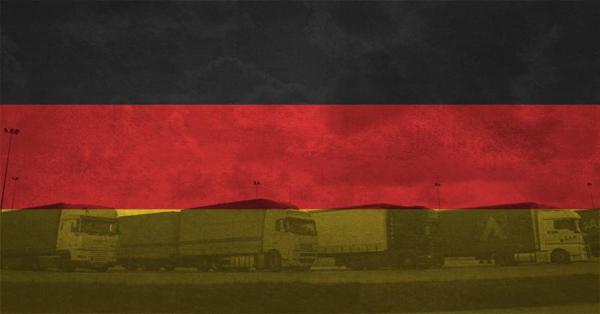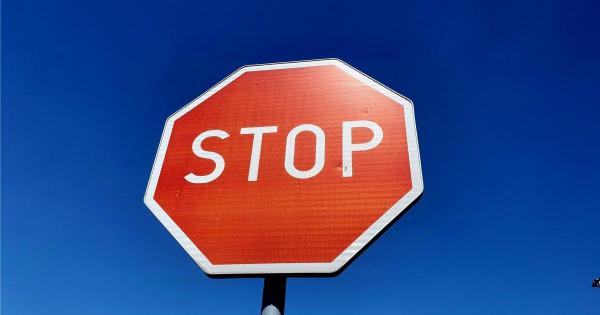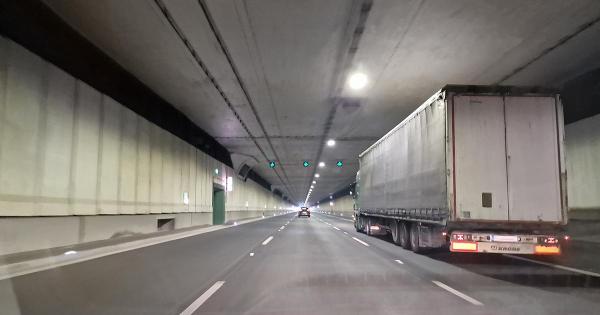
Exemption from driving bans in Bavaria
The authorities of Bavaria has suspended the HGV driving ban on Sundays and public holidays and during holiday travel periods for vehicles involved in rescue, humanitarian aid and cleaning operations and provision of essential goods to people affected by heavy rains in southern Germany
An announcement of the Bavarian Ministry of the Interior, Sports and Integration issued on June 5.
1. Vehicles with a GVW exceeding 7.5 t and vehicles with trailers are allowed to travel on Sundays and public holidays provided that it can be confirmed that the journey is performed as part of rescue, humanitarian aid or clean-up operations or in order to deliver essential supplies to communities in southern Germany affected by rainstorms.
2. Vehicles with a GVW exceeding 7.5 t and vehicles with trailers are allowed to travel on Saturdays during holiday travel periods from 7:00 AM to 8:00 PM provided that it can be confirmed that the journey is performed as part of rescue, humanitarian aid or clean-up operations or in order to deliver essential supplies to communities in southern Germany affected by rainstorms.
3. Paragraph 1 and 2 also apply to empty journeys directly and obviously related to the above transports.
4. The exemption only applies within in the territory of Bavaria.
5. This exemption enters into force on June 9 and expires on July 31 this year.
Explanatory note
In Bavaria, an exemption permit is not required in the case of the above exemptions until July 31, provided that it can be confirmed that the journey is performed as part of rescue, humanitarian aid or clean-up operations or in order to deliver essential supplies to communities in southern Germany affected by rainstorms.

Belarus introduces tonnage restrictions owing to summer heat waves
Temporary restrictions on axle loads on national roads in Belarus will apply from May 25 to August 31.
In accordance with the order of the Ministry of Transport issued on April 24, the permissible maximum load on a single axle of heavy goods vehicles driving on national roads with asphalt concrete surfaces between 11:00 AM to 8:00 PM must not exceed 6 tons when the air temperature exceeds 25 degrees Celsius.
The restriction applies to roads leading to the active border crossings in Grigorovshchina and Benyakoni. It does not apply on road sections leading to the border crossings in Kozlovichi and Kamenny Log.

Austria: A9 closed until the end of the week
The Austrian motorway operator ASFINAG has informed that on Saturday, June 8, five mudslides came down on the A9 motorway near Bösebach. In some cases, the layer of deposited mud and debris was 2 meters deep.
ASFINAG employees, firefighters and transporting companies worked around the clock using 20 trucks and 7 excavators to remove masses of earth that kept sliding down the unstable slopes, along with huge amounts of water. On Sunday, June 9, geologists and bridge engineers checked the slopes and the infrastructure and found that the rain water had also caused major damage to the motorway. Hundreds of meters of drainage systems as well as fences and protective barriers were destroyed. It is still difficult to estimate the scale of the damage. The bridge north of the Bösebach junction has also been affected: the ground around one of its pillar has been washed away by masses of water.
For safety reasons, the A9 motorway will remain closed in both directions until the end of the week. Two-way traffic on the carriageway towards Voralpenkreuz could be resumed on Friday at the earliest. However, renovation work on the carriageway towards Spielfeld will take longer. Therefore, traffic in both directions from St. Michael and Deutschfeistritz will continue to be diverted via the S6 Semmering and S35 Brucker Expressway.

Altona Tunnel: 55-hour closure of the A7
Work on the expansion of the eight-lane A7 motorway and the construction of a new noise protection tunnel on the Altona section is underway. The next step will involve removing the last structural component of the viaduct, which means the motorway has to be closed.
According to information provided by Autobahn GmbH, the A7 motorway will be completely closed from 20:00 PM on Friday, June 7, until 5:00 AM on Monday, June 10.
❌ southbound carriageway, between the intersections HH-Stellingen (26) and HH-Heimfeld (32),
❌ northbound carriageway, between the junctions HH-Heimfeld (32) and HH-Volkspark (27).
Diversion routes:
During the closures through and local traffic in both directions will be diverted along the A1, A21 and B205 motorways, and information for drivers will be displayed on VMS panels.
❌ traffic from the south from the Buchholzer triangle (43) / Horster triangle (40), through Maschener Kreuz (39), then along the A1 motorway.
❌ Drivers are advised to avoid Hamburg. Traffic from the from the north, should follow along the B205 from the Neumünster-Süd junction (15).

Nocne utrudnienia i zamknięcia belgijskich E25-E40/A602
Połączenie Liège – E25-E40/A602 będzie zamknięte przez kilka nocy, od 9 czerwca br.
1️⃣ Nocne zamknięcia będą miały wpływ na oba kierunki jazdy, między węzłem 35 “Avroy/Laveu” a węzłem 39 “Chênée” w następujące noce:
❌ od niedzieli 9 czerwca do poniedziałku 10 czerwca,
❌ od poniedziałku 10 czerwca do wtorku 11 czerwca,
❌ od wtorku 11 czerwca do środy 12 czerwca,
❌ od środy 12 czerwca do czwartku 13 czerwca,
❌ od czwartku 13 czerwca do piątku 14 czerwca.
❌ od niedzieli 16 czerwca do poniedziałku 17 czerwca,
❌ od poniedziałku 17 czerwca do wtorku 18 czerwca,
❌ od wtorku 18 czerwca do środy 19 czerwca.
W te noce połączenie będzie całkowicie zamknięte dla ruchu w obu kierunkach od godz. 22:00 (stopniowe zamykanie dostępu od godz. 20:30) do godz. 6:00 (stopniowe ponowne otwieranie od godz. 5:00).
➡Objazdy zostaną utworzone przez A604, S1 i S20.
2️⃣ Połączenie E25-E40/A062 będzie zamknięte tylko w kierunku Brukseli, od zjazdu 39 “Chênée” do zjazdu 35 “Avroy/Laveu”, w następujące noce:
❌ od środy 19 czerwca do czwartku 20 czerwca,
❌ od czwartku 20 czerwca do piątku 21 czerwca.
❌ od niedzieli 23 czerwca do poniedziałku 24 czerwca,
❌ od poniedziałku 24 czerwca do wtorku 25 czerwca,
❌ od wtorku 25 czerwca do środy 26 czerwca,
❌ od środy 26 czerwca do czwartku 27 czerwca,
❌ od czwartku 27 czerwca do piątku 28 czerwca.
W te noce połączenie będzie całkowicie zamknięte dla ruchu, tylko w kierunku Brukseli, od godz. 22:00 (stopniowe zamykanie dostępu od godz. 20:30) do godz. 6:00 (stopniowe ponowne otwieranie od godz. 5:00).
➡Objazdy będą odbywać się drogą A604, S20.

Nighttime closures of the Belgian E25-E40/A602 motorway link
The Liège – E25-E40/A602 motorway link will be closed for several nights, starting from June 9.
1️⃣ The section between junction 35 “Avroy/Laveu” and junction 39 “Chênée” will be closed in both directions on the following nights:
❌ from Sunday, June 9, to Monday, June 10,
❌ from Monday, June 10, to Tuesday, June 11,
❌ from Tuesday, June 11, to Wednesday, June 12,
❌ from Wednesday, June 12, to Thursday, June 13,
❌ from Thursday, June 13, to Friday, June 14.
❌ from Sunday, June 16, to Monday, June 17,
❌ from Monday, June 17, to Tuesday, June 18,
❌ from Tuesday, June 18, to Wednesday, June 19.
On these nights, the section will be completely closed in both directions from 10:00 PM (access will be gradually closed from 8:30 PM) to 6:00 AM (the section be will gradually reopened from 5:00).
➡Diversions will follow along the A604, S1 and S20.
2️⃣ The E25-E40/A062 motorway link will only be closed in the direction of Brussels, starting from junction 39 “Chênée” to junction 35 “Avroy/Laveu”, on the following nights:
❌ from Wednesday, June 19, to Thursday, June 20,
❌ from Thursday, June 20, to Friday, June 21,
❌ from Sunday, June 23, to Monday, June 24,
❌ from Monday, June 24, to Tuesday, June 25,
❌ from Tuesday, June 25, to Wednesday, June 26,
❌ from Wednesday, June 26, to Thursday, June 27,
❌ from Thursday, June 27, to Friday, June 28.
On these nights, the carriageway towards Brussels will be closed from 10:00 PM (access will be gradually closed from 8:30 PM) to 6:00 AM (the section be will gradually reopened from 5:00).
➡ Diversions will follow along the A604 and S20.

Alternating one-way traffic and closures of the Fréjus tunnel
Owing to scheduled safety improvement work traffic through the Fréjus Road Tunnel between Modane in France and Bardonecchia in Italy under Col du Fréjus in the Cottian Alps will be disrupted on several occasions throughout June.
⏩Days with alternating one-way traffic: 4, 5, 6, 7, 8, 11, 12, 13, 14, 15, 18, 19, 20, 21, 25, 26, 27, 28, 29 except for the following nights (from Sunday to Monday): 9/10, 16/17, June 30/July 1.
⏩The tunnel will be completely closed from 11:00 PM on Saturday, June 22, to 5:00 AM on Sunday, June 23.

Serious disruptions in French ports
The French trade union CGT Ports and Docks has announced a strike which will affect all major French seaports during several days in June.
❌ Four-hour work stoppage between 10:00 AM and 4:00 PM (the exact times may vary depending on the port): June 4, 6, 10, 12, 14, 18, 20, 24, 26 and 28.
❌ 24 work stoppage: June 13, 21 and 25.
❌ Dead port day on June 7 (access to port areas/terminals will be blocked).
Port workers are protesting against the government’s pension reform, which would allow them to retire two years earlier. If the workers do not reach an agreement with the government, they intend to continue their protest in July, which are likely to disrupt freight traffic in French seaports.

Road hauliers can apply for an exemption from the driving ban in France
June 6 marks the 80th anniversary of the D-Day landings in Normandy.
In view of the planned celebrations, the authorities of the Calvados department have decided to set up a Regulated Traffic Zone (zone de circulation régulée – ZCR), which will extend to the north and west of Caen, from the RN13 to the sea.
The zone will only be activated on 6 June, from 6am until 8pm.
Vehicles that have to enter the zone can only do that if they have a special sticker. You can apply for a ZCR sticker by e-mail by sending your request to: [email protected]
An application for a derogation from the driving ban for vehicles with a GVW of more than 7.5 tonnes
A map of the Regulated Traffic Zone (ZCR) and information about ZCR stickers

Italy: two days with an additional driving ban on the A22
Because of upcoming public holidays in Austria and Germany, the Prefecture of the Autonomous Province of Bolzano has introduced a driving ban for vehicles with a GVW over 7.5 tons on the northbound carriageway of the Brenner motorway (A22) between Vipiteno and the border with Austria (northbound) on the following days:
- ▶️ Monday, May 20, from 00:00 to 10:00 PM
- ▶️Thursday, May 30, from 00:00 to 10:00 PM
Vehicles travelling along this section when the ban is in effect are obliged to park at the Sadobre parking lot in Vipiteno or at other parking lots indicated by Autobrennero S.p.A.
Vehicles carrying perishable food products, farm animals or vehicles involved in combined road-rail transport with a railway reservation are excluded from the ban.